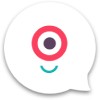20 Top Chatbots That Are Revolutionizing Customer Engagement
As technology continues to advance, businesses are constantly seeking new ways to improve their customer engagement strategies. Chatbots have emerged as a popular solution, offering an efficient and effective way to automate customer interactions and provide personalized experiences. Here is a list of 20 top AI-powered chatbots that are leading the way in changing the game of customer experience.

Free chatbot builder software. Qualify leads, book meetings, provide customer support, and scale your one-to-one conversations—all with chatbots.
Visit website➔
Automated conversational Journeys. Create automated paths with artificial intelligence that turn customer conversations into immediate solutions.
Visit website➔
BotsCrew is a chatbot development company that offers end-to-end solutions for businesses, including chatbot design, development, deployment, and maintenance, using artificial intelligence and machine learning technologies.
Visit website➔
Botsify is a platform that allows users to create AI-powered chatbots for their websites, social media, and messaging apps without any coding knowledge.
Visit website➔
ChatBot is a cloud-based platform that provides businesses with a user-friendly interface to build and deploy custom chatbots for various channels, including websites, messaging apps, and voice assistants, using artificial intelligence and natural language processing technologies.
Visit website➔
Chatfuel is the leading no-code chatbot platform trusted by 7m+ businesses. Acquire new customers, increase sales, and automate support
Visit website➔
Live chat software for instant customer communication. Connect with customers on your website and popular messaging apps to grow revenue, generate leads, and offer real-time support.
Visit website➔
Drift is a conversational marketing and sales platform that enables businesses to engage with customers in real-time using chatbots, email, and video, helping to increase conversions and improve customer experiences.
Visit website➔
Everything you’ll ever need to develop an advanced AI assistant is included in our unique platform. Start with the basics and grow over time.
Visit website➔
Giosg combines live chat, chatbots, AI, and interactive content in one platform to help you connect with your customers to grow customer satisfaction and sales.
Visit website➔
Imperson develops turnkey chatbot solutions that automate the entire customer journey, naturally, through conversation.
Visit website➔
Intercom is a conversational relationship platform that provides businesses with a suite of tools for customer communication, including live chat, email, and social media, all in one centralized location.
Visit website➔
A French startup has developed into one of the best AI chatbots for Facebook Messenger. It helps businesses shorten their response time to frequently asked questions by answering them directly through the chatbots.
Visit website➔
Bring all the contact channels to one location: live chat, social media, messengers, and phone calls. Engage with clients using their preferred channel.
Visit website➔
Landbot is a conversational platform that enables businesses to build conversational websites, chatbots, and forms using a no-code visual builder, allowing for streamlined customer interactions and efficient lead generation.
Visit website➔
ManyChat is a platform that enables businesses to create messenger chatbots for marketing, sales, and customer support, using a visual drag-and-drop builder.
Visit website➔
Meya is a cloud-based platform that offers a comprehensive solution for building, deploying, and managing custom chatbots and virtual assistants using a modular approach that combines machine learning and natural language processing (NLP) technologies.
Visit website➔
Make your business human by using live chat software for sales, marketing and customer support on your website.
Visit website➔
A platform for creating and deploying chatbots. Pandorabots is a company that specializes in developing artificial intelligence (AI) software for conversational interfaces.
Visit website➔
Live chat software that keeps your customers close. Start the conversation on your website, stay in touch through messaging apps.
Visit website➔
Wit.ai is a natural language processing (NLP) platform that provides developers with tools and APIs to build chatbots, voice apps, and other AI-powered applications that can understand and interpret human language.
Visit website➔
WotNot is an AI-powered chatbot platform that enables businesses to create customizable chatbots to automate customer support, lead generation, and sales processes, without any coding knowledge.
Visit website➔Good to know...
What is a chatbot, and how does it work?
A chatbot tool is a software application that enables businesses to create, deploy, and manage chatbots for conversational interfaces such as messaging apps, websites, and voice assistants. Chatbot tools use natural language processing (NLP) and machine learning algorithms to understand and interpret user inputs, and respond to them in a conversational way. Some chatbot tools also offer visual drag-and-drop interfaces that allow users to build chatbots without coding knowledge. Chatbot tools can be integrated with various channels and platforms, enabling businesses to automate customer support, sales, and marketing processes, and improve customer engagement and experiences.
What are the benefits of using chatbot tools for businesses?
There are several benefits of using chatbot tools for businesses, including:
- Improved customer engagement: Chatbots enable businesses to provide personalized, real-time interactions with customers, enhancing the overall customer experience.
- Increased efficiency: Chatbots can automate repetitive tasks such as customer support inquiries, freeing up time and resources for businesses to focus on other areas of the business.
- Cost savings: Chatbots can help reduce the costs associated with customer support and sales by automating these processes.
- 24/7 availability: Chatbots can provide round-the-clock support, allowing businesses to engage with customers at any time of the day or night.
- Scalability: Chatbots can handle multiple conversations simultaneously, enabling businesses to scale their customer engagement efforts without the need to hire additional staff.
- Data collection: Chatbots can collect and analyze data on customer interactions, providing businesses with valuable insights into customer behavior and preferences.
- Integration with other tools and platforms: Chatbot tools can be integrated with other tools and platforms, such as CRM systems and marketing automation software, enabling businesses to streamline their operations and improve efficiency.
What are the key features to look for in a chatbot tool?
When selecting a chatbot tool, there are several key features to consider:
- Natural language processing (NLP): A chatbot tool should have strong NLP capabilities to understand and interpret user inputs accurately.
- Machine learning: The tool should be able to learn from past interactions and improve its responses over time.
- Multi-channel support: The chatbot tool should be able to integrate with multiple channels and platforms, such as messaging apps, websites, and voice assistants.
- Visual builder: A visual builder can help users without coding experience to create chatbots easily.
- Analytics: A chatbot tool should provide analytics and reporting capabilities, allowing businesses to track the performance of their chatbots and gain insights into user behavior.
- Integration with other tools and platforms: A chatbot tool should be able to integrate with other tools and platforms, such as CRM systems and marketing automation software.
- Security: A chatbot tool should have robust security features to protect user data and prevent security breaches.
- Customization: The tool should allow businesses to customize their chatbots according to their brand voice and personality.
- Customer support: The chatbot tool should provide reliable customer support to assist businesses in case of technical issues or questions.
- Pricing: The pricing model should be transparent and affordable, with flexible options for businesses of different sizes and needs.
How do chatbot tools use artificial intelligence and machine learning?
Chatbot tools use artificial intelligence (AI) and machine learning (ML) algorithms to provide a more human-like conversation experience with users.
AI and ML allow chatbots to learn from past interactions and improve their responses over time. Chatbot tools use natural language processing (NLP) algorithms to understand and interpret user inputs and identify the intent behind them. NLP enables chatbots to respond to user inputs in a conversational way, similar to how a human would.
Machine learning algorithms allow chatbots to improve their responses over time. As chatbots interact with more users, they learn from these interactions and can refine their responses based on user feedback.
Chatbot tools may also use other AI technologies, such as sentiment analysis, which can help chatbots understand the emotional tone of user inputs and respond accordingly.
Overall, the use of AI and ML in chatbot tools helps to create a more natural, personalized, and efficient user experience, improving customer engagement and satisfaction.
What are some popular use cases for chatbot tools?
There are many popular use cases for chatbot tools in various industries, including:
- Customer service: Chatbots can help businesses provide 24/7 customer support, answer frequently asked questions, and route complex queries to human agents.
- E-commerce: Chatbots can assist customers in finding products, checking order status, and making purchases, providing a personalized and efficient shopping experience.
- Healthcare: Chatbots can assist patients in booking appointments, answering health-related questions, and providing personalized health recommendations.
- Banking and finance: Chatbots can help customers with account inquiries, money transfers, and fraud alerts, providing a secure and convenient banking experience.
- Education: Chatbots can provide personalized learning experiences, answer students' questions, and provide feedback on assignments.
- Travel and hospitality: Chatbots can help customers with booking reservations, providing travel recommendations, and answering travel-related questions.
- HR and recruiting: Chatbots can assist in job applications, candidate screening, and scheduling interviews, streamlining the recruitment process.
Overall, chatbot tools can help businesses automate routine tasks, reduce response times, and provide personalized and efficient services to their customers, improving customer engagement and satisfaction.
What are the differences between rule-based chatbots and AI-powered chatbots?
The main differences between rule-based chatbots and AI-powered chatbots are:
- Technology used: Rule-based chatbots use a pre-defined set of rules and decision trees to determine their responses to user inputs. AI-powered chatbots, on the other hand, use machine learning algorithms, natural language processing (NLP), and other AI technologies to understand user inputs and generate responses.
- Complexity: Rule-based chatbots are relatively simple and can only respond to a limited set of pre-defined user inputs. AI-powered chatbots, on the other hand, are more complex and can understand a wide range of user inputs and generate more natural and human-like responses.
- Flexibility: Rule-based chatbots are inflexible and cannot learn from past interactions with users. AI-powered chatbots, on the other hand, can learn from past interactions and improve their responses over time, making them more flexible and adaptable.
- Accuracy: Rule-based chatbots are typically less accurate than AI-powered chatbots, as they rely on pre-defined rules that may not always account for all possible scenarios. AI-powered chatbots, on the other hand, can use machine learning algorithms to improve their accuracy and provide more accurate responses to user inputs.
Overall, while rule-based chatbots are relatively simple and straightforward to implement, they are limited in their capabilities and may not provide a natural or human-like conversational experience. AI-powered chatbots, on the other hand, are more complex and require more resources to implement, but can provide a more sophisticated and personalized conversational experience that is more in line with what users expect from a chatbot.
How much does it cost to use a chatbot tool, and what are the pricing models?
The cost of using a chatbot tool varies depending on the provider, the features and capabilities of the tool, and the pricing model used. Here are some common pricing models for chatbot tools:
- Subscription-based: Many chatbot tools charge a monthly or annual subscription fee based on the number of users, conversations, or features used. The cost can range from a few dollars to hundreds or even thousands of dollars per month, depending on the complexity of the tool and the level of service provided.
- Pay-per-use: Some chatbot tools charge on a per-use basis, meaning that you only pay for the number of conversations or messages processed by the chatbot. This model can be more cost-effective for businesses with lower chatbot usage.
- Custom pricing: Some chatbot tools offer custom pricing based on the specific needs and requirements of the business. This may include additional features, customization, or support services.
It's important to note that some chatbot tools may also charge additional fees for advanced features such as machine learning, natural language processing, or integration with other software systems.
Overall, the cost of using a chatbot tool can range from free for basic tools to thousands of dollars per month for more complex and advanced tools. Businesses should carefully evaluate their needs and budget when choosing a chatbot tool and consider the pricing model and any additional fees that may apply.
What are some best practices for deploying and managing chatbots with a chatbot tool?
Here are some best practices for deploying and managing chatbots:
- Define clear goals and use cases: Before deploying a chatbot, it's important to define clear goals and use cases for the chatbot. This will help ensure that the chatbot is designed and configured to meet the specific needs of the business and its customers.
- Design a conversational flow: The conversational flow is the backbone of any chatbot. It's important to design a conversational flow that is intuitive, user-friendly, and matches the tone and personality of the business.
- Test and refine the chatbot: Once the chatbot is deployed, it's important to test and refine it based on user feedback and analytics. This will help ensure that the chatbot is meeting the needs of its users and is providing a positive customer experience.
- Provide clear instructions for users: It's important to provide clear instructions for users on how to interact with the chatbot, including examples of questions and commands that the chatbot can handle.
- Monitor chatbot performance: Monitoring chatbot performance is important to identify issues and areas for improvement. This can be done through analytics and user feedback, which can help identify common issues and areas where the chatbot can be improved.
- Integrate the chatbot with other systems: Integrating the chatbot with other systems, such as customer relationship management (CRM) systems, can help improve the chatbot's performance and effectiveness.
- Provide ongoing maintenance and updates: Chatbots require ongoing maintenance and updates to ensure that they continue to meet the needs of the business and its customers. This may include updates to the conversational flow, integration with new systems, and improvements to the chatbot's natural language processing capabilities.
What integrations are available with chatbot tools?
The integrations available with chatbot tools can vary depending on the tool and its capabilities, but some common integrations include:
- Customer relationship management (CRM) systems: Chatbot tools can integrate with CRM systems to provide a seamless flow of customer data and insights, enabling businesses to better understand their customers and deliver more personalized experiences.
- Social media platforms: Chatbot tools can integrate with social media platforms such as Facebook, Twitter, and Instagram, allowing businesses to engage with customers across multiple channels.
- E-commerce platforms: Chatbot tools can integrate with e-commerce platforms such as Shopify and Magento, enabling businesses to provide a seamless shopping experience for customers.
- Payment gateways: Chatbot tools can integrate with payment gateways such as PayPal and Stripe, allowing customers to make purchases or payments directly through the chatbot.
- Analytics platforms: Chatbot tools can integrate with analytics platforms such as Google Analytics, allowing businesses to track and analyze the performance of their chatbot and optimize it based on user behavior and insights.
- Help desk and ticketing systems: Chatbot tools can integrate with help desk and ticketing systems such as Zendesk and Freshdesk, enabling businesses to provide timely and effective customer support through the chatbot.
- Marketing automation tools: Chatbot tools can integrate with marketing automation tools such as HubSpot and Marketo, allowing businesses to automate their marketing campaigns and deliver more targeted messaging to customers.